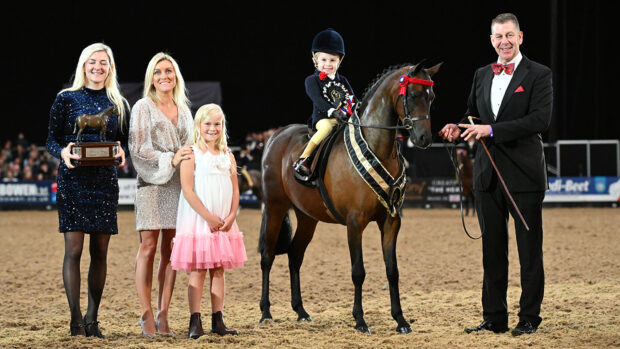The road to becoming a championship level showing judge can be a long one, especially if you’re just starting out and are yet to experience showing from the middle of the ring.
“There are two main lessons I’ve learnt along the way,” said esteemed judge and former showing producer Stuart Hollings, when he chatted to H&H’s showing editor Alex Robinson on episode 92 of The Horse & Hound Podcast.
Stuart’s first tip is to always judge what you see on the day – it’s vital to “always judge from the middle of the ring”.
Stuart said this revelation came in 1984 when he was competing at the City of Leicester show before judging the lead rein final at the British Show Pony Society (BSPS) summer championships 10 days later.
“There were between 60 and 70 ponies forward in the class at the BSPS championships,” he explained. “In those days there was just one class for each type of pony, not like today where you have several opportunities and classes to do with one pony at each show.
“We had three line-ups of ponies. When the first trot up was done I would signal one, two or three to the steward behind my back, and they would put them in the first, second or third line-up.
“A grey pony who I had seen at the City of Leicester and had dismissed 10 days earlier won the class. It taught me to always judge from the middle of the ring.”
Stuart also said that when judging a big mixed class of coloured horses or ponies that he would never ask the combinations to change the rein on the go-round.
“You should be able to assess a class early on. When they change the rein they can look completely different. Showing is a very visual sport and a horse may have a lovely front one way, but may have a dark splodge on the neck and somehow it might not look to be the same animal from the other side. So if they don’t change the rein, then you can easily keep track.
“The pull in is one of the most important aspects when you’re judging. For instance, when I judged the show ponies at the Royal International in 2019, there were two combinations on equal marks; I said to my co-judge that this decision should be easy as we’d pulled one in fourth and one in 13th, so the one which has been pulled in fourth should have a plus next to it and therefore place higher.”
Hear more from Stuart, including some of his highlights from his extensive career as both a producer and judge, on episode 92 of the Horse & Hound Podcast.
You might also like:

The Horse & Hound Podcast 92: Showing expert Stuart Hollings | Balancing your horse, fitness & social life | News round-up

Stuart Hollings: New amateur rulings in showing are ‘bureaucratic buffoonery’

Subscribe to Horse & Hound magazine today – and enjoy unlimited website access all year round
Horse & Hound magazine, out every Thursday, is packed with all the latest news and reports, as well as interviews, specials, nostalgia, vet and training advice. Find how you can enjoy the magazine delivered to your door every week, plus options to upgrade your subscription to access our online service that brings you breaking news and reports as well as other benefits.




